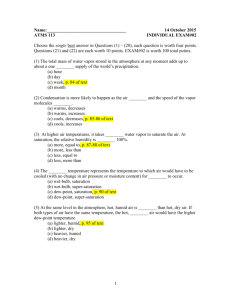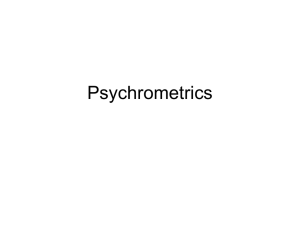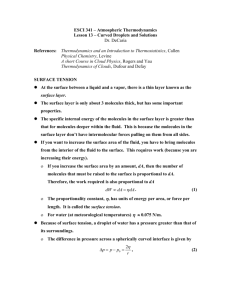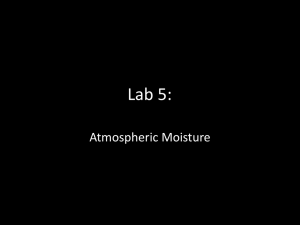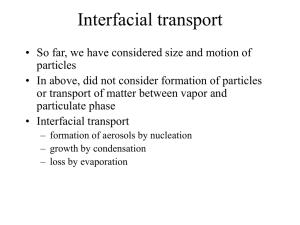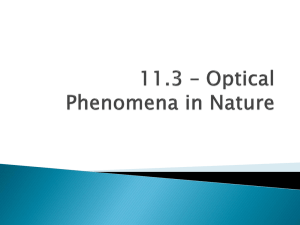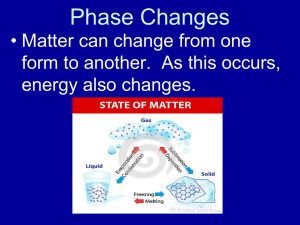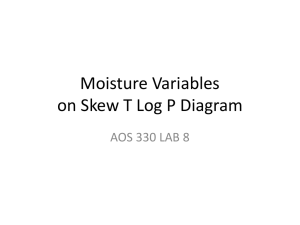DropletActivation
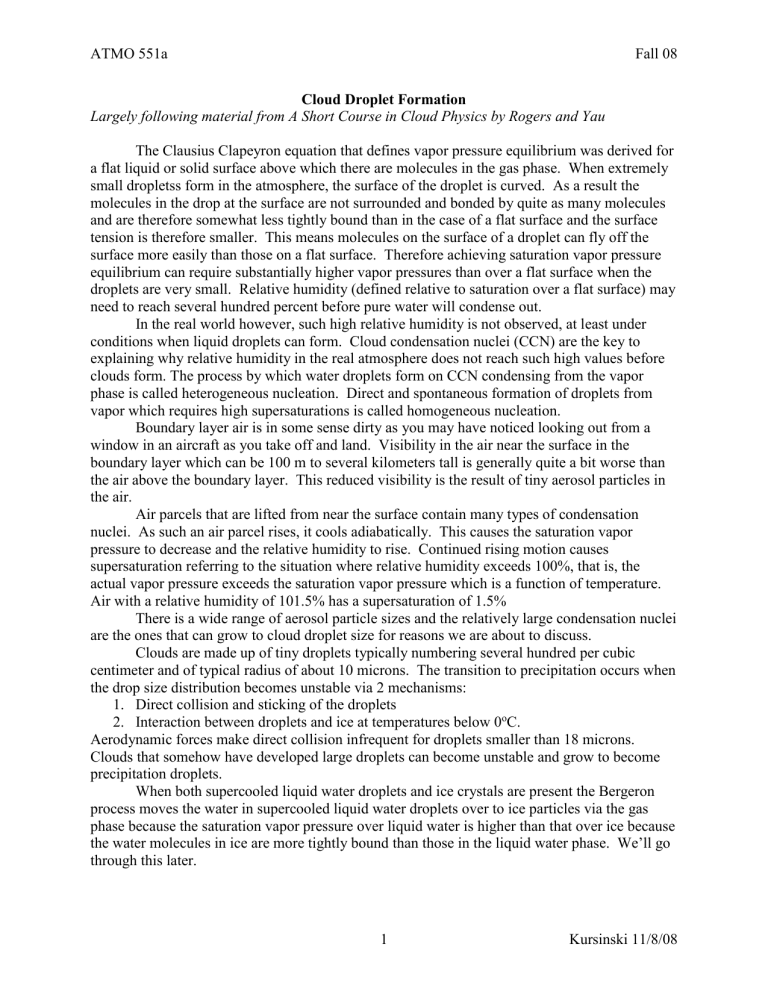
ATMO 551a Fall 08
Cloud Droplet Formation
Largely following material from A Short Course in Cloud Physics by Rogers and Yau
The Clausius Clapeyron equation that defines vapor pressure equilibrium was derived for a flat liquid or solid surface above which there are molecules in the gas phase. When extremely small dropletss form in the atmosphere, the surface of the droplet is curved. As a result the molecules in the drop at the surface are not surrounded and bonded by quite as many molecules and are therefore somewhat less tightly bound than in the case of a flat surface and the surface tension is therefore smaller. This means molecules on the surface of a droplet can fly off the surface more easily than those on a flat surface. Therefore achieving saturation vapor pressure equilibrium can require substantially higher vapor pressures than over a flat surface when the droplets are very small. Relative humidity (defined relative to saturation over a flat surface) may need to reach several hundred percent before pure water will condense out.
In the real world however, such high relative humidity is not observed, at least under conditions when liquid droplets can form. Cloud condensation nuclei (CCN) are the key to explaining why relative humidity in the real atmosphere does not reach such high values before clouds form. The process by which water droplets form on CCN condensing from the vapor phase is called heterogeneous nucleation. Direct and spontaneous formation of droplets from vapor which requires high supersaturations is called homogeneous nucleation.
Boundary layer air is in some sense dirty as you may have noticed looking out from a window in an aircraft as you take off and land. Visibility in the air near the surface in the boundary layer which can be 100 m to several kilometers tall is generally quite a bit worse than the air above the boundary layer. This reduced visibility is the result of tiny aerosol particles in the air.
Air parcels that are lifted from near the surface contain many types of condensation nuclei. As such an air parcel rises, it cools adiabatically. This causes the saturation vapor pressure to decrease and the relative humidity to rise. Continued rising motion causes supersaturation referring to the situation where relative humidity exceeds 100%, that is, the actual vapor pressure exceeds the saturation vapor pressure which is a function of temperature.
Air with a relative humidity of 101.5% has a supersaturation of 1.5%
There is a wide range of aerosol particle sizes and the relatively large condensation nuclei are the ones that can grow to cloud droplet size for reasons we are about to discuss.
Clouds are made up of tiny droplets typically numbering several hundred per cubic centimeter and of typical radius of about 10 microns. The transition to precipitation occurs when the drop size distribution becomes unstable via 2 mechanisms:
1.
Direct collision and sticking of the droplets
2.
Interaction between droplets and ice at temperatures below 0 o
C.
Aerodynamic forces make direct collision infrequent for droplets smaller than 18 microns.
Clouds that somehow have developed large droplets can become unstable and grow to become precipitation droplets.
When both supercooled liquid water droplets and ice crystals are present the Bergeron process moves the water in supercooled liquid water droplets over to ice particles via the gas phase because the saturation vapor pressure over liquid water is higher than that over ice because the water molecules in ice are more tightly bound than those in the liquid water phase. We’ll go through this later.
1 Kursinski 11/8/08
ATMO 551a Fall 08
Saturation over a curved surface
The saturation vapor pressure over a curved surface is higher than that over a flat surface and is given by e s
e s
r
, T
exp
2 rR v
L
T
(1) where e s
( r =
, T ) is the saturation vapor pressure over a flat surface, where e s
( r , T ) is the saturation vapor pressure over a curved surface, r is the radius of the droplet,
is the surface tension (in force per unit length) and liquid water density,
L
, at temperature, T , and R v
is the gas
conditions.
For a cloud to grow, the vapor pressure must be greater than the e s
. We can determine the critical radius for a droplet to grow given a supersaturation, S , defined as
S
e s e
r
, T
(2)
Setting e = e s
( r , T ) which gives the threshold for neutral conditions above which the droplet will grow and combining (1) and (2) yields ln
e s e s
r
, T
ln
e s e
r
, T
ln
r c
2
R v
L
T
Therefore the critical radius, r c
, is
r c
R v
L
2
T ln
(3)
Given a supersaturation, S , for a droplet to be stable, it must grow to at least a radius of r c
. Note that the larger S is, the smaller r c
is. So very small droplets indeed require higher
= 1.01, or a supersaturation of 1%, r c
is 0.121 microns. Droplets larger than this will grow. Droplets smaller than this will evaporate.
Heterogeneous Nucleation and the Kohler curve
Aerosols are categorized as hydrophobic, neutral and hygroscopic depending on how they interact with water. Water condenses onto condensation or hygroscopic nuclei. The effect is that when some of the solute is added to the water liquid the solute molecules replace some of the liquid water molecules in the surface layer. This both reduces the number of water vapor molecules at the surface and these molecules bind water more tightly to water than water does to itself. The net effect is to reduce the saturation vapor pressure required to create equilibrium where the number of water molecules leaving the surface is equal to the number of gas phase molecules striking and sticking to the surface.
For a plane surface, according to Raoult’s law e s e '
r
, T
n
0 n
n
0
(4)
2 Kursinski 11/8/08
ATMO 551a Fall 08 where e’
is the equilibrium vapor pressure over a solution consisting of n
0
molecules of water and n molecules of the solute. When n << n
0
, we can further write e s e '
r
, T
1
n n
0
(5)
For solutions in which the dissolved molecules are dissociated, (5) must be modified by multiplying n by the factor, i , which is the degree of ionic dissociation. For sodium chloride and
detailed information about i . The number of effective ions, n , in a solute of mass, M , is given by n
iN a
M m s
(6) where N a
is Avagadro’s number, m s
is the molecular mass of the solute. Likewise the number of water molecules in a mass, m , of water is
n
0
N a m m v
(7)
Therefore e s e '
r
, T
1
iN a
N a
M m s m m v
1
im v
M m s m
1
3 im
4 m
M s v
r
3
L
1
b r
3
(8) where b =
4
3 im m s v
M
L
and
L
is the mass density of liquid water. Plugging this into (1) yields e s
e s
'
r
, T
1
r b
3
exp
2 rR v
When r is not too small, this may be approximated as
L
T
1
r b
3
exp
a r
e s e s
'
r
, T
1
a
r b r
3
(9)
(10)
The a / r term is a curvature term representing the increase in the saturation vapor pressure due to the curvature of the surface and the b / r
3
term is the solution term. a ~ 3.3x10
-7
/ T (in m) and b ~
4.3x10
-6 iM / m s
(in m 3 ).
The figure below shows these curves for a cloud condensation nuclei, M , of 10
-19
kg of
NaCl (table salt) and a temperature of 273 K.
3 Kursinski 11/8/08
ATMO 551a Fall 08 exp(a/r)
1-b/r^3
(1-b/r^3)exp(a/r)
1.02
1.015
1.01
1.005
1
0.995
0.99
0.01
0.1
droplet radius (microns)
0.985
1
Finding the point where the slope is zero yields the peak super saturation, S *, for (9) and corresponding radius, r *, given by
S *
1
4 a
3
/27 b r *
3 b / a
The table below shows a range of NaCl CCN masses and peak supersaturations etc.
Mass of dissolved salt (kg)
1.00E-19 0.0223
r*
(microns)
0.19
(S*-1)
%
0.41%
1.00E-18
1.00E-17
1.00E-16
1.00E-15
0.0479
0.1033
0.2225
0.4794
0.61
1.9
6.1
19.
0.13%
0.041%
0.013%
0.0041%
10
4 Kursinski 11/8/08
